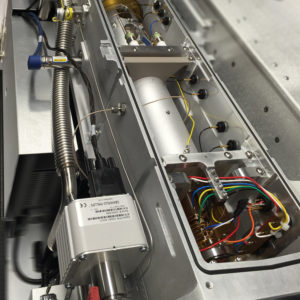The National Institutes of Health (NIH) has awarded an eight-year, $5.85 million grant to Gary Patti, associate professor of chemistry in Arts & Sciences at Washington University in St. Louis, for research.
The award is part of the inaugural Revolutionizing Innovative, Visionary Environmental health Research program (RIVER). Starting this academic year, it is being given to a select handful of U.S. scientists in varying career stages for work in environmental health. The RIVER design: to fund scientists with transformative visions and track records for impactful and innovative research contributions.
Patti intends to use the grant to delve deeper into the study of metabolites — a pursuit known as metabolomics. The National Institute of Environmental Health Sciences, the division of the NIH issuing the RIVER award, was among the first to support metabolomics. As early as 2004, just a few years after the term “metabolomics” was first coined, the National Institute of Environmental Health Sciences announced plans to provide funding to advance metabolomics for environmental health.

Scientists in environmental health are interested in applying metabolomics to human samples such as serum, which is a component of blood. Their goal is not only to measure molecules made naturally inside the body, but also to find substances that originate from exposure to dangerous chemicals throughout a lifetime. Increasing evidence suggests that such chemical exposures play a much larger role in causing disease than once thought.
It is the environment, in many cases, that sets off our “bad genes,” scientists are learning. In other words, the chemicals we eat, breathe, and touch might be at the root of many health problems. The questions are: Which chemicals, and how?
“We can detect thousands of signals from a metabolomic analysis of human serum,” Patti said. “The challenge is that a major fraction of the signals cannot be identified with our current libraries.”
This has left researchers scratching their heads. One popular interpretation is that lots of these unidentifiable signals arise from chemical exposures. Patti has a different perspective: “With new experimental approaches, we’ve learned that thousands of signals in some metabolomic data sets come from experimental contaminants and artifacts,” he said. “This greatly enhances our resolution to find unknown exposure chemicals, which may correlate to far fewer signals than what has been predicted.”
Patti is hopeful that new metabolomic approaches also will help to provide insight into why certain chemicals are toxic. “There are tens of thousands of chemicals in widespread commercial use,” Patti said. “The effects of most of these compounds on human health are completely unknown. We intend to develop and apply new metabolomic technologies that will allow us both to screen chemicals for potentially hazardous effects, and also to better understand exactly how these chemicals are toxic.”
The grant launches this month and goes through the end of July 2025.
